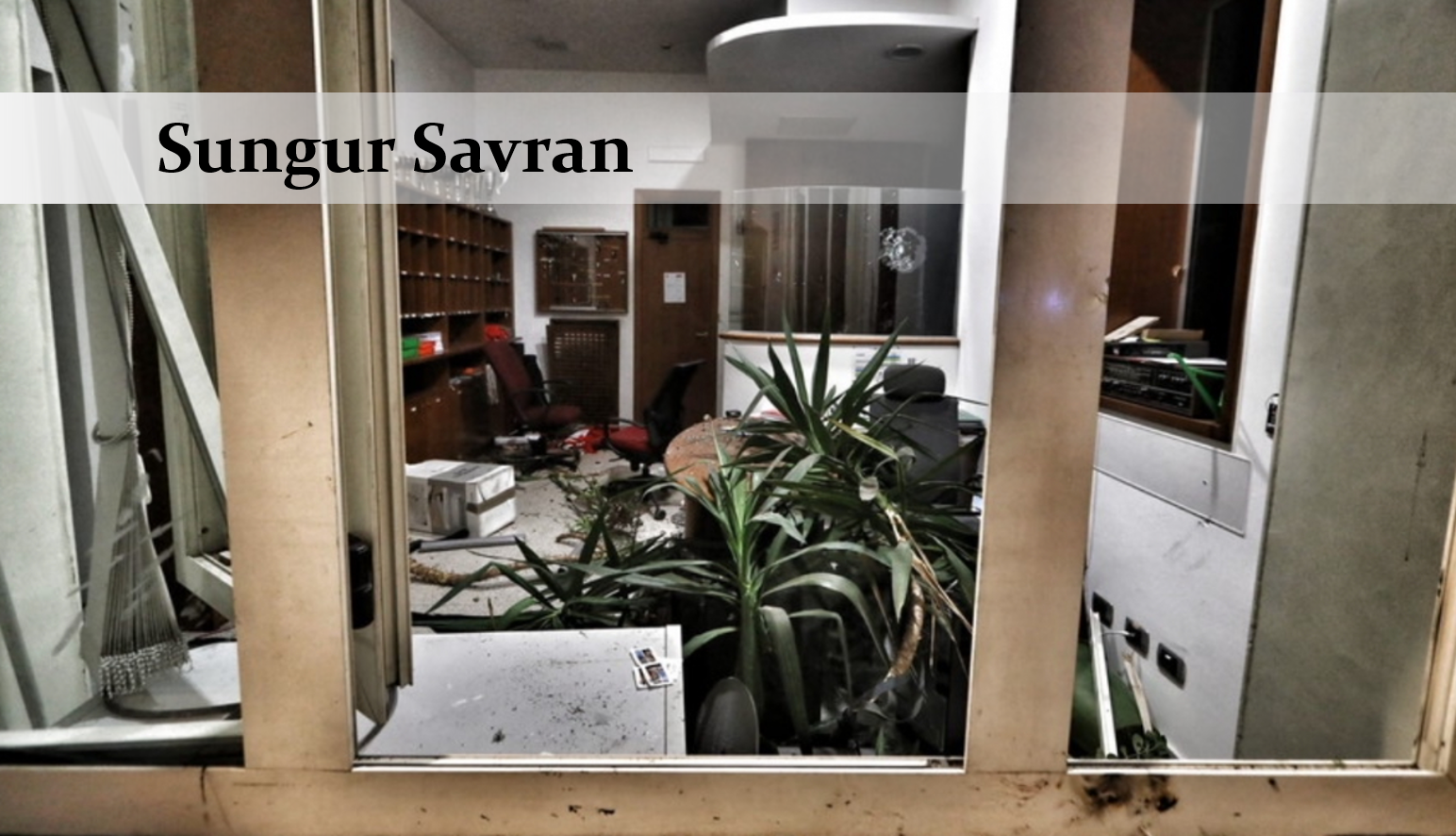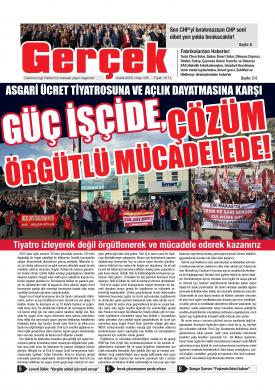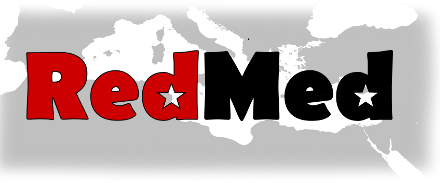Italy’s Capitol moment: The second coming of fascism

Disciplined, fed with the lowliest ideological garbage, entranced by the feeling of superiority that derives from the erstwhile colonial feats of European civilisation and of their own country, full of rage against the immigrant and the refugee, who, they believe, has robbed them of their job, housing, educational and healthcare services, a crowd full of missionary zeal. The only missing thing is their militia, their paramilitary forces, their bands of thugs. But this is precisely why we do not label them as fascists, but proto-fascists. That they can overcome this lacuna in the wink of an eye has been demonstrated in Charlottesville, Virginia in the events of summer 2017 or in the German cities of Chemnitz and Köthen last autumn or in the chain of events in which black immigrant farm workers were attacked (and occasionally killed) in Italy after Salvini came to power in a coalition government last year. (Our “European Elections: Iron and Cotton”)
This is what we had to say about the state of the international fascist movement a bit longer than two years ago, in the wake of the elections to the European Parliament in June 2019. Our prediction of a transformation of the movement “in the wink of an eye” has recently become the norm in many countries. Nearing its end now, 2021 will leave its mark in the history of the 21st century as the year of the “coming out” of fascism. The year was literally opened by the storming of the Capitol by the partisans of Trump on 6th January. This was followed by the pronunciamiento of the French generals threatening a civil war, a military coup d’état and thousands of deaths on 21st April, significantly on exactly the 60th anniversary of the OAS failed coup of 1961 during the Algerian war. The spectre of fascism then moved further eastward to India, where, starting on 8th September, the thugs of the Bharatiya Janata Party (BJP) in power ransacked the offices of the Communist Party of India-Marxist (CPI-M) in the state of Tripura and set many buildings on fire. And now we have come full circle in time and place, to the country that first introduced a fascist regime to the world in 1922, Italy.
On 9th October, the fascists of Nuova Forza, making use of the occasion of an anti-vax and anti-Green Pass demonstration in Rome, first tried to approach Montecitorio, the palace where the Italian parliament convenes, obviously in an attempt to rehearse the feat of their brethren in the United States of taking over the symbol of national sovereignty in the country (strangely, there is some inconsistency in the news, other sources talking of the Palazzo Chigi, the seat of the government, but this makes little difference). The capturing of this target having proved impossible, they then turned to go to the nearby headquarters of the largest trade union confederation of Italy, Cgil, under whose umbrella millions of Italian workers are organised. They stormed the building, managed to get out of the way whatever security forces there were, entered the building and vandalised the interior.
Why do we label these incidents “the coming out of fascism”? Because fascism had already been around for years (and even decades in some cases) in all these countries. But it was in hiding. It tried to cover up under other guises, all the while gaining in strength and building itself new emplacements. And the world at large looked the other way. Rather than calling a spade a spade, the intelligentsia, right and left, called the rising fascist movement “populist” and dismissed the voices of a minority that warned of the threat posed by fascism, primarily but not exclusively in the imperialist countries. We called the general movement proto-fascist because it did not assert itself openly as fascist and even tried to de-demonise its image as Marine Le Pen has been trying to do in France for more than a decade. It was fascism in the shadows. More importantly, none of these movements were armed, none had paramilitary forces, none resorted to violence against the working class and other forces (here the exception among the four is India, to which we will come back), but simply used violent and sometime even foul language against the enemies of fascism, whatever these may be in the differing contexts of these countries.
They have now all come out. But the majority of the left is still looking the other way.
The significance of the four events
The string of events that have dotted the landscape in 2021 imply that rising proto-fascism has now entered a new stage of transition towards fully-fledged fascism. In a forthcoming article in the annual English-language publication of our theoretical journal, Revolutionary Marxism 2021 (to be published in November) we look at this process in much greater detail than we can go into here. We take up the current situation in the three imperialist countries in question, the US, France, and Italy. (We note, however, that at the time that article was finished and sent for publication, the events in India and Italy that we mentioned in the introduction to this brief article had not yet taken place.) So, we will only give here the bare outline of our argument to appear in Revolutionary Marxism 2021, referring the reader to the longer version there for a fuller treatment. The scope of that article covers, in particular, a thorough critique of the “populism” school and of those Marxists who, for years, denied the fascist nature of the forces we are discussing for years on end, in some cases in full knowledge of all the warnings that we made throughout the entire period since the onset of the Third Great Depression in 2008.
The four countries obviously have their specificities. Let us quickly run through the significance of the event in 2021 that we referred to in the case of each country.
In the United States, the left rejected the appellation of “fascist” (or more precisely in our opinion, proto-fascist) for Trump. The 6th January event proved, as we had warned previously, that Trump had turned to the organising of paramilitary forces that were preparing to take power through violent means if forced to do so. Bands of thugs such as Proud Boys, Oath Keepers, and Three Percenters were the moving force among the hordes that stormed the Capitol. Moreover, Trump now almost wholly controls the Republican Party, so that US proto-fascism is no longer one consisting of a general without an army, as it was for a long time during Trump’s term in office. Once Trump has come out with an attempt at the forcible seizure of power and is now equipped with street forces, this implies that his proto-fascism is turning more and more into the ordinary pattern of the rise of fascism.
In France, it was, until very recently, not only the spectacular rise of Marine Le Pen’s National Rally party (formerly the National Front), but the whole political atmosphere that was coming under the influence of a fascist political culture. The supposedly liberal Macron government had become a heavily repressive government in its desperate attempt to steal votes from Marine Le Pen, whom Macron regarded as his formidable rival in the second tour of the presidential elections of 2022. There was also an ascendancy of the rise of an entire set of demagogues, philosophers, journalists, and public intellectuals of all kinds, who contributed to the poisonous atmosphere of racism propagated by the Le Pen party for decades. As the presidential elections of April 2022 approach, at least one other threatening rival has appeared on the horizon, a certain Eric Zemmour, who is rabidly anti-racist and anti-Muslim and is more and more a centre of attention on the part of a sizeable electorate. It is in this atmosphere that the generals’ pronunciamiento came in April. That Marine Le Pen tied herself to the generals’ worries and invited these coup-mongers to her party in order to achieve their shared objectives through so-called “democratic” methods suggests that she is open to make use of a certain current in the armed forces among her coercive instruments. But French proto-fascism still has no paramilitary forces of its own on the streets. However, there are other organisations such as Action française or Génération identitaire (the latter recently banned by the government but still active in devious ways), organisations that are openly fascist as opposed to the Le Pen party and may easily form the street forces of a rising fascism, alongside the band of generals that threatens civil war. All in all, it surely would not be an exaggeration to say that French fascism is now assuming its colours more boldly and thus beginning a transition from decades of disguised existence to an openly fascist orientation.
India is a case apart. The BJP is, in fact, the side product of an openly fascist paramilitary organisation that was born during the first, classical wave of fascism in the 1930s as our comrade Burak Gürel has admirably shown in his full-bodied study of the Indian scene. Thus, in the case of the BJP, it is not possible to talk of proto-fascism but a “fascism in waiting” so to speak, waiting for the day when conditions will become entirely propitious for the taking of power in an absolutist manner and implementing its programme of Hindutva nationalism gone crazy together with the elimination of all working-class organisations that are independent of its absolutist regime. So, the significance of the 8th September attacks on the CPI-M is different from the common characteristic in the other three cases. These latter cases can be summed up in the recourse to or threat of violence. For its part, Indian fascism has constantly been engaging in violent attacks, involving large masses, for the last several decades, even before it came to power at the central level. But these were all attacks on the minority populations, primarily Muslims, the largest communal minority, but also less frequently on Christians, Sikhs and others. The bloody attack on the students and faculty of the Jawaharlal Nehru University in Delhi in January 2020 was a diversion from this. It was an attack on the left intelligentsia, not yet the workers’ movement. The Tripura events show, in our opinion, that the BJP is testing the working-class political movement, consisting primarily of two self-styled communist parties (the CPI and the CPI-M) (the third communist party, the Naxalites, still fighting, over the decades, in the jungles is an entirely separate case), to see whether it can raise the bar for an eventual fascist takeover in the future. However, given the resilience of the peasant movement that has been fighting the three pro-agribusiness laws militantly for close to a full year and the rather militant struggles of some labour unions, its task seems to be formidable. Nonetheless, the Tripura attacks may be the signal of a new period in the class struggle in India.
Italy, a second neuralgic centre of class struggles in Europe
The latest event in Italy deserves to be taken up in more detail. To set the stage for our main thesis, let us first depict the situation in Europe with broad strokes of the brush. There is no doubt that class struggles on the European continent have taken a hard beating from the combined effect of the rise of Euro-communism and the consequent liquidation of even the national-communist parties that were a decisive actor in their respective countries, the triumph obtained by Thatcherite neo-liberalism as a strategy of attack on the gains of the working class, the total capitulation before this neo-liberal onslaught of the so-called “socialist” or “social-democratic” parties of the continent, which should now be called by the more proper name of social-capitalist, and the coup de grâce given by the collapse of the Berlin Wall and the dissolution of the state born of the October revolution of 1917, the Soviet Union. So, the 21st century has not exactly been a vibrant period for the struggles of the working class on the continent, with occasional exceptions here and there.
However, there has been a sea-change in France since 2016. The struggles against the Labour Law, the so-called Loi Khomry, (see the article in Revolutionary Marxism 2017 by our comrade Savas Mikhail-Matsas) under the social-capitalist president François Hollande, which was taken up by large sections of French society along with the workers (the so-called “Nuits Debout/Nights Awake” movement was pretty similar to the 2011 “Squares Movement” in Spain and Greece and the Gezi uprising of 2013 in Turkey), the successive struggles under Macron, in particular the fight waged against a new regime of retirement, and the Yellow Vests movement that lasted longer than a year until the pandemic dissolved it, added up to years of effervescence in this country with a long revolutionary history. France has thus been at the centre of class struggles in Europe in the recent period.
Italy is the country that stands second only to France in terms of the prospects of decisive battles between reactionary forces and the working-class and other oppressed strata in society. This is a country where fascism was never entirely pulverised (as for instance in Germany for a while) and now sees this most reactionary of movements rise on the horizon in manifold guises. There is the opportunistic proto-fascism of the League, which under Matteo Salvini has transformed itself very consciously into a replica and an ally of Marine Le Pen’s party in the mid-2010s (on Salvini, see the article by our comrade Burak Sayım). There is the organisational and ideological heir to Mussolini’s party, Fratelli d’Italia led by a firebrand woman Georgia Meloni, which is now closely on the heels of Salvini’s League at opinion polls. The two parties, the League and Meloni’s Fratelli d’Italia (Brothers of Italy, led ironically by a woman!), together poll more than 40 per cent of the intention to vote in recent opinion research. But in addition to these parties to be properly characterised as “proto-fascist”, there are others, much more openly fascist: Forza nuova (New Force), which was the organisation at the centre of the storming of the labour confederation Cgil, and Casa Pound (the Pound House, named, strangely, after the illustrious American poet Ezra Pound, a friend of Mussolini’s fascist regime in the interwar years).
The left is in no measure to counter the tremendous rise of the fascist pest. The formerly formidable Stalinist communist party, turned Euro-Communist in the 1970s, the strongest such party in the capitalist world, simply evaporated in the 1990s, to finally become an insipid Democratic Party, fashioned after its US namesake. Those forces that resisted against the rupture of the movement from the communist tradition, however defined, united in the so-called Rifondazione comunista (Communist Refoundation), bringing together not only remnants of the old party but also Trotskyist and centrist forces. Yet this party foundered on the tradition of class collaboration that had become central to the national-communism of the former Italian Communist Party, the Pci. The failure of that last attempt at a party with mass influence has left behind a plethora of parties, some genuinely revolutionary, others subjectively so, but the Italian left is extremely divided and does not seem to be able to gather the necessary forces to fight the rise of fascism.
However, Italy had a remarkably militant working-class tradition of struggles since the late 1960s and the trade-union movement is still a force to be reckoned with. There are the three traditional confederations, the Cgil, the Cisl, and the Uil, which, despite their rigidly bureaucratic structure in their different manners, at least have the tradition to act in unison when under attack, be it an anti-labour offensive or a law that eliminates long-held positions of the working class. There are, then, the so-called grassroots unions, more militant, but weaker in following, such as the COBAS and the COBAS Si, which do not refrain from participating in united-front types of action. Thus, the response of the unions to the fascist storming of the headquarters of the Cgil was unified and robust. Upon the appeal of the unions, 200 thousand people gathered in Rome, including large contingents of youth, to protest fascism’s assault on the workers’ movement. A word about the youth: under the combined effect of the pulverisation of the revolutionary and centrist left and the surviving influence of the “autonomist-Marxist”/semi-anarchistic ideology that was dominant on the Italian left in its heyday, there are many hundreds of local organisations all over Italy that bring together in very different types of struggles both student youth and working-class youth from the marginalised sectors of society. On certain issues of importance to them, they are quite combative. This is a strong asset in the fight against fascism should a working-class centre adopting a united-front orientation be able to bring together large masses of the working population under its aegis.
Italy is a country torn by severe problems. It has the highest public debt on the continent, yet its economy has been stagnating since the beginning of the new century. The European Commission set the biggest portion of its Covid-19 pandemic relief funds aside for Italy and, after having manoeuvred to bring down a previous coalition government, entrusted the execution of this last desperate programme to wake Italy from its torpor to an accomplished servant of European imperialism, Mario Draghi, former governor of the European Central Bank. This transitional period is then of vital importance for the Italian and European bourgeoisie and the irruption of fascism in the midst of this arduous work by Draghi may prove to be fatal to the whole project.
Fascism as a (false) saviour of last resort for the imperialist bourgeoisie
Whatever the vagaries and the contingencies that seize all these and other countries, one point of overriding importance must be emphasized. This is fascism’s second coming. The first wave of fascism that rose in the interwar years of the 20th century was the response of certain fractions of the international bourgeoisie to the impasse created by the contradictions of a capitalism in decline, manifesting itself in the Great Depression of the 1930s. These fractions opted for national salvation where an international solution was simply not on the horizon. However, fascism itself was no solution in a world where the socialisation of the productive forces and the internationalisation of capital ruled out national solutions. The dialectical outcome was the Second World War, resulting in immense devastation and death.
We are faced with the second wave of fascism in the context of yet another great depression (which we call the Third Great Depression, since preceding the household great depression of the 1930s there was a less familiar one in late 19th century). An ever-growing fraction of the bourgeoisie in different countries is taking the path of Hitler and Mussolini. That they are no match for Hitler and Mussolini in their stature should not fool anyone, let alone Marxists: however important their role in history, individuals are, in the last instance, executors of the programme of classes and class fractions. The international bourgeoisie is dying for a solution to its insuperable problems. If there appears no Hitler, it will have to make do with those of the ilk of Trump.













